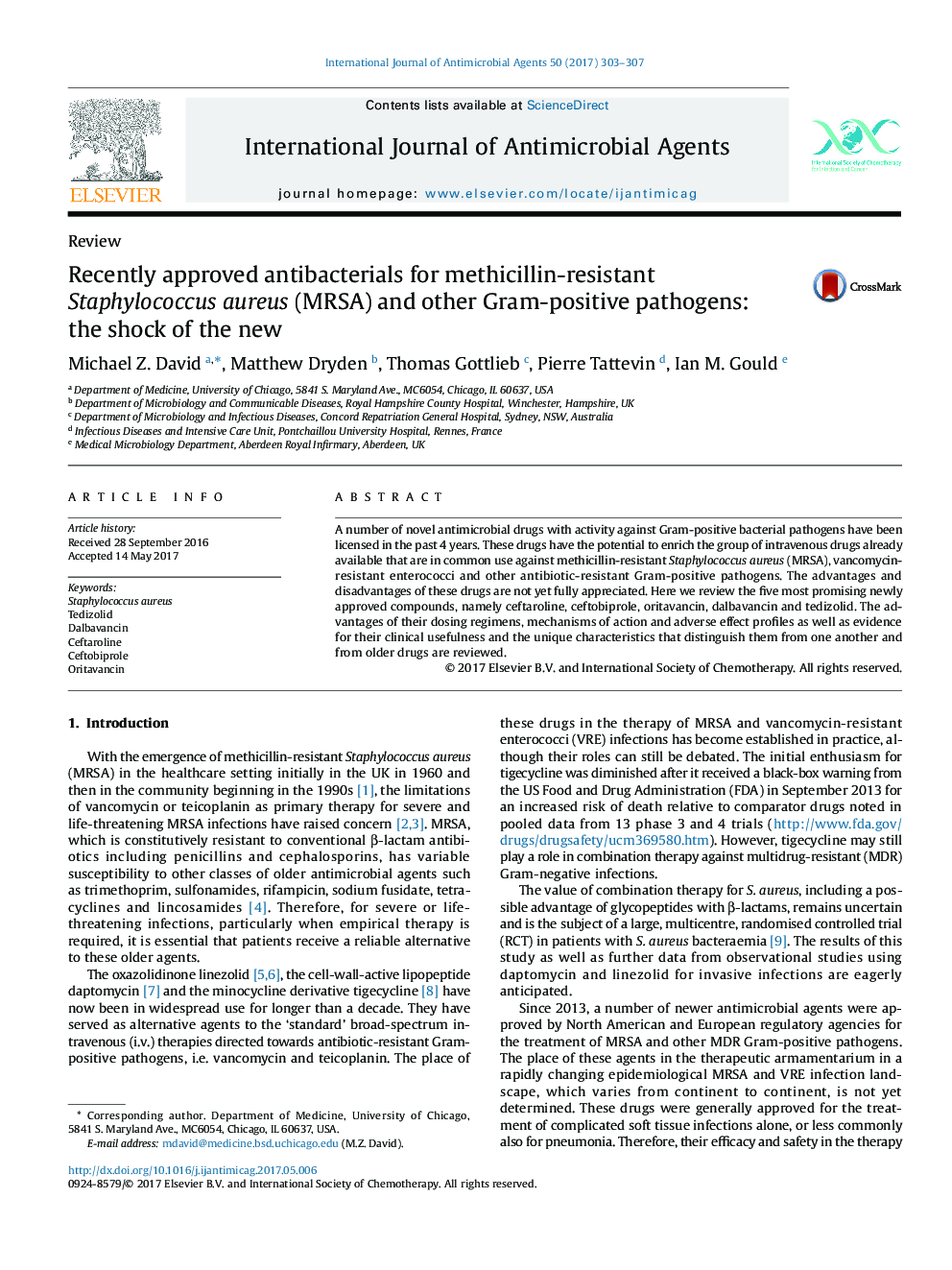| Article ID | Journal | Published Year | Pages | File Type |
|---|---|---|---|---|
| 5666782 | International Journal of Antimicrobial Agents | 2017 | 5 Pages |
â¢Tedizolid, dalbavancin, ceftaroline, ceftobiprole and oritavancin are new antibacterials.â¢All five drugs are broadly effective against Gram-positive bacteria.â¢They will likely have important roles in therapy of multidrug-resistant infections.â¢They are not yet approved for treatment of most invasive infections.â¢Monitoring for unanticipated adverse effects and resistance will be essential.
A number of novel antimicrobial drugs with activity against Gram-positive bacterial pathogens have been licensed in the past 4 years. These drugs have the potential to enrich the group of intravenous drugs already available that are in common use against methicillin-resistant Staphylococcus aureus (MRSA), vancomycin-resistant enterococci and other antibiotic-resistant Gram-positive pathogens. The advantages and disadvantages of these drugs are not yet fully appreciated. Here we review the five most promising newly approved compounds, namely ceftaroline, ceftobiprole, oritavancin, dalbavancin and tedizolid. The advantages of their dosing regimens, mechanisms of action and adverse effect profiles as well as evidence for their clinical usefulness and the unique characteristics that distinguish them from one another and from older drugs are reviewed.
